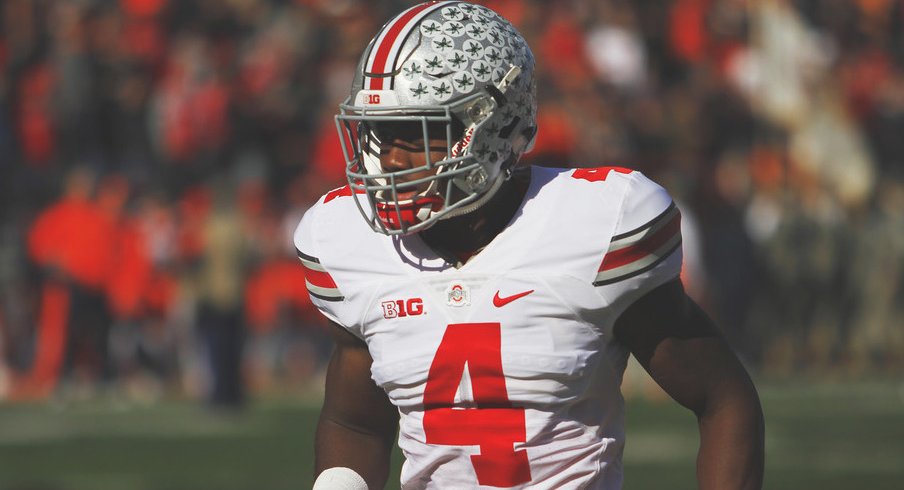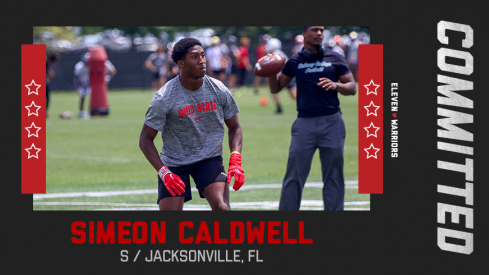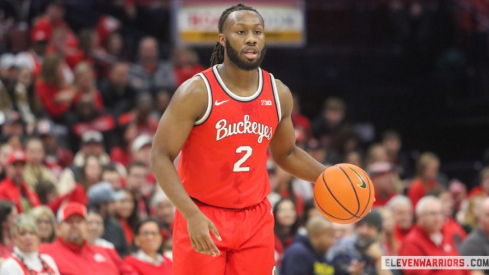Ohio State adds another top-100 safety as Simeon Caldwell commits to the Buckeyes.
What is Curtis Samuel? Not who, but what?
Is he a running back? How about a wide receiver? Can he play both?
These are questions Ohio State fans have tried to figure out for the better part of two years. And yet, as the Buckeyes prepare to enter fall camp for the 2016 season, there still may not be a definitive answer.
“In my mind,” Ohio State coach Urban Meyer said at Big Ten Media Days, “he’s one of the top two or three playmakers on the team.”
Samuel is a dynamic offensive weapon; this much we know. But despite his playmaking ability, he’s been unable to find a niche in the Buckeyes’ offense through two seasons.
With all of Ohio State’s roster turnover in 2016, that has to change.
“Curtis Samuel needs to get the ball,” Buckeyes quarterback J.T. Barrett said. “It doesn’t matter how he gets it. He’s very dynamic. He’s one of the most dynamic players on our team. He needs the ball in his hands.
“Whether it be running back, H, punt return, kickoff; I really don’t care as long as Curtis Samuel touches the ball.”
During the 2014 season, as a freshman, Samuel served as the primary backup running back behind Ezekiel Elliott. The Brooklyn, New York native racked up 383 rushing yards and six touchdowns while averaging an eye-popping 6.6 yards per carry. Additionally, Samuel caught 11 passes for 95 yards.
There were points early that year where many wondered if Samuel, not Elliott, was actually the Buckeyes’ best option at running back. But as the season rolled along, Elliott emerged as not only the top back on Ohio State’s roster but one of the best at the position nationally. He carried the Buckeyes on a historic three-game run to win Big Ten and national titles, racking up a ridiculous 696 yards and eight touchdowns during Ohio State’s final three games of 2014.
That put the Buckeyes in a bit of a bind when it came to Samuel. Elliott was going to be the running back, but Meyer and Co. needed to find a way to get Samuel involved in the offense. The decision was made to move the talented sophomore to wide receiver with hopes of putting him in a hybrid-type role.
The result, however, was Samuel often getting lost in the shuffle on a team flooded with playmakers. He had just 289 receiving yards, 132 rushing yards and three touchdowns in 2015.
“You’re talking about, it was him and Braxton [Miller],” Barrett said. “And let’s talk about Mike Thomas. You want me to keep on going? Jalin Marshall. It was deep everywhere and there’s only one football so somebody is not getting the ball.
“... It was a sticky situation for sure.”
Elliott is gone, as are other those other offensive weapons Barrett mentioned. Samuel is still in the fold and now, as a junior, will need to play a much more expanded role in Ohio State’s offense even though it’s still unknown how he’ll be used.
With Bri’onte Dunn out of the equation following his dismissal, redshirt freshman Mike Weber figures to be Elliott’s replacement as the starting running back. Meyer insists Samuel will be heavily involved in the running game, however, and will carry the ball out of the backfield this season — something he did only 17 times last season as a sophomore.
He’s still going to be used as a receiver, too. Meyer said he didn’t have a specific number in mind in terms of touches for Samuel, but he’d like it to be somewhere in the 10-to-15 range.
“He’ll get the ball,” Meyer said.
That’s going to need to happen if Ohio State is to reach its offensive potential on the field this fall. Samuel needs to be involved and he needs to be involved more than he has the previous two seasons.
“We need to get him the ball any way possible,” Ohio State linebacker Raekwon McMillan said. “If it’s at running back, quarterback, receiver, whatever. Whatever it is, we need to get him the ball.”


